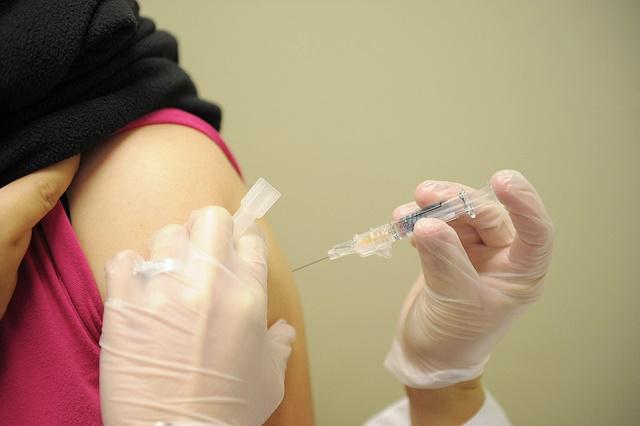A World Health Organization (WHO) expert committee today recommended changes for two of three strains in the trivalent versions of influenza vaccines for the Southern Hemisphere next year because of changes in circulating strains.
An expert committee meeting in Memphis, Tenn., this week recommended swapping out the A/H3N2 and B strains in trivalent influenza vaccines. For quadrivalent formulations, the group recommended adding the influenza B Yamagata lineage component that was included in its previous trivalent recommendation for both hemispheres. The A/H1N1 strain would remain the same.
The WHO recommends the following for trivalent vaccines:
- For H1N1, a A/California/7/2009-like virus
- For H3N2, an A/Hong Hong/4801/2014-like virus
- For B, Brisbane/60/2008-like virus (belonging to the Victoria lineage)
For quadrivalent vaccines that contain a second B strain, the agency recommended adding Phuket/3073/2013-like virus, a Yamagata lineage virus that was the B component of trivalent vaccines for the Southern Hemisphere's current season and is the B component of trivalent vaccines for the Northern Hemisphere's upcoming season.
Evidence behind the changes
The update for the H3N2 component was driven by gene studies of viruses circulating from February to August, which found that, of two clades (3C.2 and 3C.3), those in the 3C.2a subclade are predominant in all regions of the world. Viruses from two other H3N2 subclades (3C.3a and 3C.3b) continue to circulate, but represent a small minority of viruses.
WHO lab experts found that cell-grown versions of A/Switzerland/9715293/2013-like virus (the previous H3N2 component representing the 3C.3a subclade) and an A/Hong Kong/4801/2014-like virus from the 3C.2a subclade were antigenically similar. However, the egg-grown A/Hong Kong virus was antigenically and genetically more similar to circulating viruses from the dominant subclade.
The influenza B strain change to a Victoria virus was influenced by evidence of an increasing number of Victoria lineage virus detections at the end of the Northern Hemisphere season and through the Southern Hemisphere season. "A change in the trivalent B component was made to account for this trend observed in several regions," the committee said in a question-and-answer backgrounder that accompanied its announcement.
For the quadrivalent vaccines, the group said the Phuket strain—included in last season's trivalent vaccines—would be the appropriate Yamagata lineage choice. It added that countries that expect the Yamagata lineage to predominate in 2016 could select the Phuket-like virus in their trivalent vaccines.
The strains in the 2015-16 Northern Hemisphere vaccine, based on the WHO committee's recommendations in February, are the same as the 2015 Southern Hemisphere vaccine but different than the newly announced strains for 2016. Because of the 6- to 8-month lead time it takes to prepare vaccine viruses, grow them in eggs or cell cultures, obtain regulatory approval, and produce vaccines, the WHO recommends its strain selections in September for the next year's Southern Hemisphere's flu season and in February for the upcoming Northern Hemisphere season.
Viruses with zoonotic, pandemic potential
The group also looked at the most recent information on flu viruses that have zoonotic or pandemic potential. The experts didn't propose any new candidate vaccine viruses (CVVs) for H5, H7N9, or H9N2. But they did propose CVVs be developed for an H1N1 variant detected this year in Ohio.
They noted that so far 844 human cases of H5N1 avian flu have been confirmed worldwide, including 449 deaths, while 667 cases with 275 deaths of H7N9 avian flu have been reported to the WHO.
See also:
Sep 24 WHO document on recommended flu vaccine strains
Sep 24 WHO flu vaccine strain selection Q and A
Sep 24 WHO zoonotic influenza virus candidate vaccine virus recommendations
Sep 26, 2014, CIDRAP News story "WHO: Switch 2 of 3 strains in 2015 flu vaccine"
Feb 26 CIDRAP News scan "WHO recommends 2 strain changes for next flu vaccine"





















